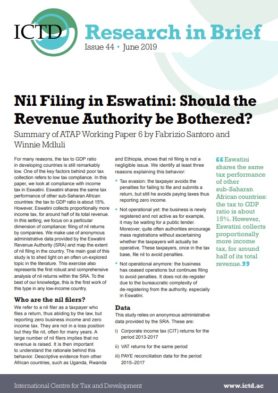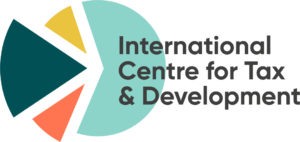Research in Brief 44
For many reasons, the tax to GDP ratio in developing countries is still remarkably low. One of the key factors behind poor tax collection refers to low tax compliance. In this paper, we look at compliance with income tax in Eswatini. Eswatini shares the same tax performance of other sub-Saharan African countries: the tax to GDP ratio is about 15%. However, Eswatini collects proportionally more income tax, for around half of its total revenue. In this setting, we focus on a particular dimension of compliance: filing of nil returns by companies. We make use of anonymous administrative data provided by the Eswatini Revenue Authority (SRA) and map the extent of nil filing in the country. The main goal of this study is to shed light on an often un-explored topic in the literature. This exercise also represents the first robust and comprehensive analysis of nil returns within the SRA. To the best of our knowledge, this is the first work of this type in any low-income country. Summary of ATAP 6 by Fabrizio Santoro and Winnie Mdluli.

